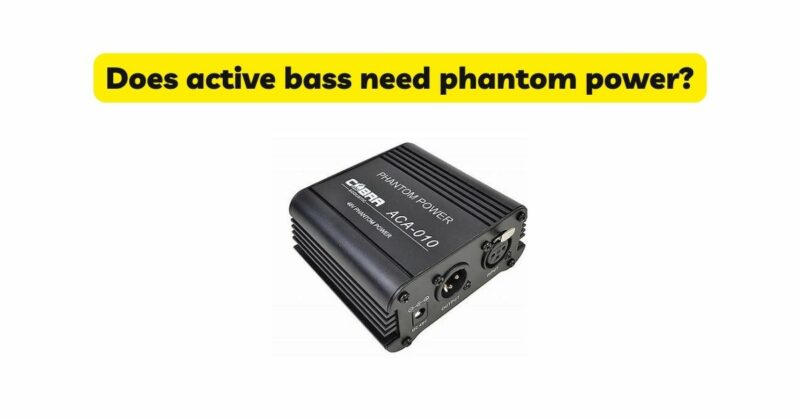Active bass guitars have gained immense popularity in the music industry due to their ability to deliver a powerful and versatile sound. These instruments feature built-in preamp circuits, which amplify the signal from the pickups and provide tonal shaping options. One common question that arises among musicians and enthusiasts is whether active bass guitars require phantom power to operate efficiently. In this article, we will delve into the topic and separate myth from reality.
Understanding Active Bass Guitars : Before we dive into the phantom power debate, it’s crucial to grasp the basics of active bass guitars. Unlike passive bass guitars, which rely solely on the magnetic pickups to generate a signal, active bass guitars incorporate a battery-powered preamp circuit. This preamp enhances the instrument’s output signal and offers additional control over the tone, such as boosting or cutting frequencies. The preamp circuit requires a power source to function effectively.
What is Phantom Power? Phantom power is a method used to provide power to condenser microphones, active direct boxes, and some other audio equipment. It involves sending a DC voltage through the same cables used for audio signals, usually 48 volts, to power the devices that require it. Phantom power is commonly available on mixing consoles, audio interfaces, and mic preamps.
Dispelling the Myth : There is a common misconception that active bass guitars require phantom power to operate. However, this notion is incorrect. Active bass guitars do not rely on phantom power to function because they have their own dedicated power source—the onboard battery. The battery provides the necessary power to operate the preamp circuitry within the instrument.Phantom power is primarily intended for condenser microphones and certain active audio devices that don’t have their own power source. These devices use the phantom power provided by the mixing console or audio interface to operate their internal circuitry. The phantom power is delivered via the XLR cable or TRS connection, which is different from the instrument cable used with bass guitars.While active bass guitars and microphones both require power, they are entirely different in terms of their power sources and connection methods. Phantom power is not applicable to active bass guitars as they have their own self-contained power supply. Therefore, there is no need to supply phantom power from an audio interface or mixing console to an active bass guitar.
Benefits of Active Bass Guitars : Active bass guitars offer numerous advantages over their passive counterparts. The onboard preamp circuitry allows for precise control over the instrument’s tone, making it easier to shape and sculpt the sound according to individual preferences. The ability to boost or cut specific frequencies enhances the bass player’s versatility and adaptability in different musical contexts.Furthermore, active bass guitars typically have a higher output level, resulting in a stronger signal that can drive amplifiers and effects units more effectively. This increased signal strength reduces the noise floor and enhances the overall clarity of the instrument’s sound.Another significant advantage of active bass guitars is the reduced susceptibility to signal loss over long cable runs. The active electronics compensate for the loss of high-frequency content that can occur with long instrument cables, resulting in a more balanced and consistent tone.
Conclusion: In conclusion, the myth that active bass guitars require phantom power has been debunked. Active bass guitars have their own dedicated power source in the form of onboard batteries. Therefore, there is no need to supply phantom power from an audio interface or mixing console to an active bass guitar.Understanding the distinction between phantom power and the power requirements of active bass guitars is essential for musicians and enthusiasts. Active bass guitars offer unique tonal possibilities, increased output levels, and improved signal integrity over long cable runs. Embracing the capabilities of active bass guitars can enhance a bass player’s musical expression and contribute to a more dynamic and powerful performance.


